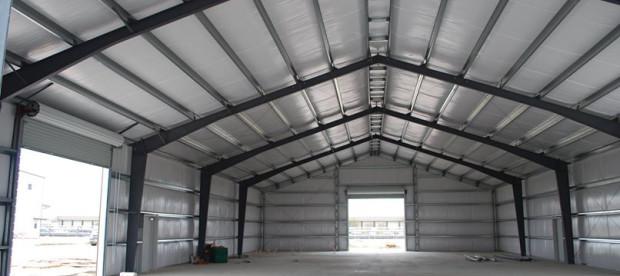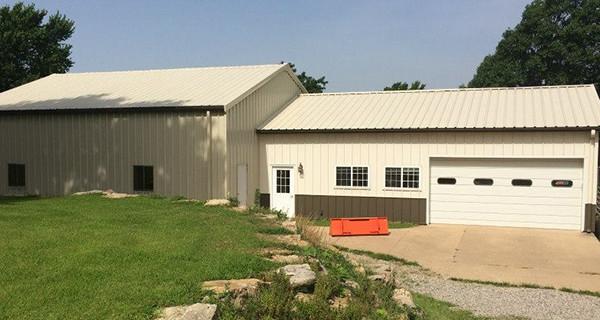Let your Choir Blow the Roof Off Your Old Church Building

There is nothing like the sound of a choir reverberating throughout a church sanctuary. While some say, “seeing is believing,” when it comes to the spirituality of a congregation, an amazing choir can effortlessly turn the phrase into “hearing is believing.” Now, I’m sure your choral group lets the Spirit shine on Sunday morning, however, are you maximizing their acoustic potential? If your church leadership group is considering new church construction, go ahead and let your choir blow the roof off your old building, and replace it with a church building made from steel.
 Because your choir is one of the centerpieces of your sanctuary, it deserves a venue of divine sound quality. But don’t get caught in a trap. Recently, I spoke with a pastor who had been in charge of a church building campaign, and he shared his experience with me.
Because your choir is one of the centerpieces of your sanctuary, it deserves a venue of divine sound quality. But don’t get caught in a trap. Recently, I spoke with a pastor who had been in charge of a church building campaign, and he shared his experience with me.
When his church committee decided it was time for more space to accommodate a growing congregation, he and members of the church staff traveled around their city, and observed different architecture and building styles and determined what best fit their own needs and wants. They compiled a list of likes and dislikes, and brought ideas back to their building designer. The acoustics of the church were a priority, but ultimately didn’t make the top of the list. They thought, while important, it was something that could be postponed until later in the process. So their building was designed with the church leaders’ plans in mind, and the process was expedited to the next phase.
Later, while the church was being erected, the pastor approached the design team, and started inquiring about acoustics and if he should hire an acoustical consultant. He had a mental picture of his choir filling his new sanctuary with musical greetings of the organ and old hymns refreshed in the Holy Spirit. But he was a little too late.
While its very possible to add some small acoustic finishes to a church building, it doesn’t generally make a large impact. Don’t get me wrong, advice from acoustical consultants can help, but the biggest acoustical differences are essentially decided by a building’s size and shape. During the design process is the time to discuss and determine acoustics.
This process could have been avoided if this pastor chose a steel building manufacturer with an in-house project manager, focused on all phases of a church building mission. Providing a plan from conception to completion is a part of the blueprint of our company. In fact, we ask every client how each building is going to be used. I need to understand each factor’s significance and convention from paper to erection.
Insulation also affects the acoustics and sound quality of a steel church building. Insulation has the ability to absorb sound and keep it from moving throughout the building, and it also can decrease the amount of noise coming in and out of the building.
 Reducing outside noise is vital because you don’t want your congregation to be distracted by traffic, construction or other exterior sounds. According to the North American Insulation Manufacturers Association (NAIMA), adding metal building insulation to the metal building construction can reduce noise levels in a metal building by 5-6 decibels. (A decibel is the unit used to measure the intensity of sound.)
Reducing outside noise is vital because you don’t want your congregation to be distracted by traffic, construction or other exterior sounds. According to the North American Insulation Manufacturers Association (NAIMA), adding metal building insulation to the metal building construction can reduce noise levels in a metal building by 5-6 decibels. (A decibel is the unit used to measure the intensity of sound.)
To maximize a metal building’s acoustical performance, the NAIMA recommends the wall and/or roof panels should include at least one layer of faced metal building insulation, and one layer of unfaced metal building insulation. Facing is the thin layer of plastic or paper attached to one side of the insulation.
Let your choir be heard the way God intended! What are ways you’ve found to maximize the sound of your singing group?
Photo courtesy: US Embassy Sweden
« How to Build a Dynamite Referral System
How Pastors Can Lead Volunteers Effectively »
Popular Posts

When you plan for your steel building, you’ll want to think about insulation. The first question you need to ask yourself: Do I even need it? For residential structures or garages and workshops, usually people spring for some kind of insulation. When it comes to commercial or agricultural buildings, it might not be necessary depending… …

We often talk about the benefits of a steel building as it relates to a business or a storage warehouse, but did you know a pre-engineered metal building can be a great home as well? Modern home buyers want to get the most value for their money and it’s understandable since we’ve slowly been climbing… …

